9 Oct 2024
How Energy Trading Software Simplifies Risk Management and Compliance
Matthew Connor
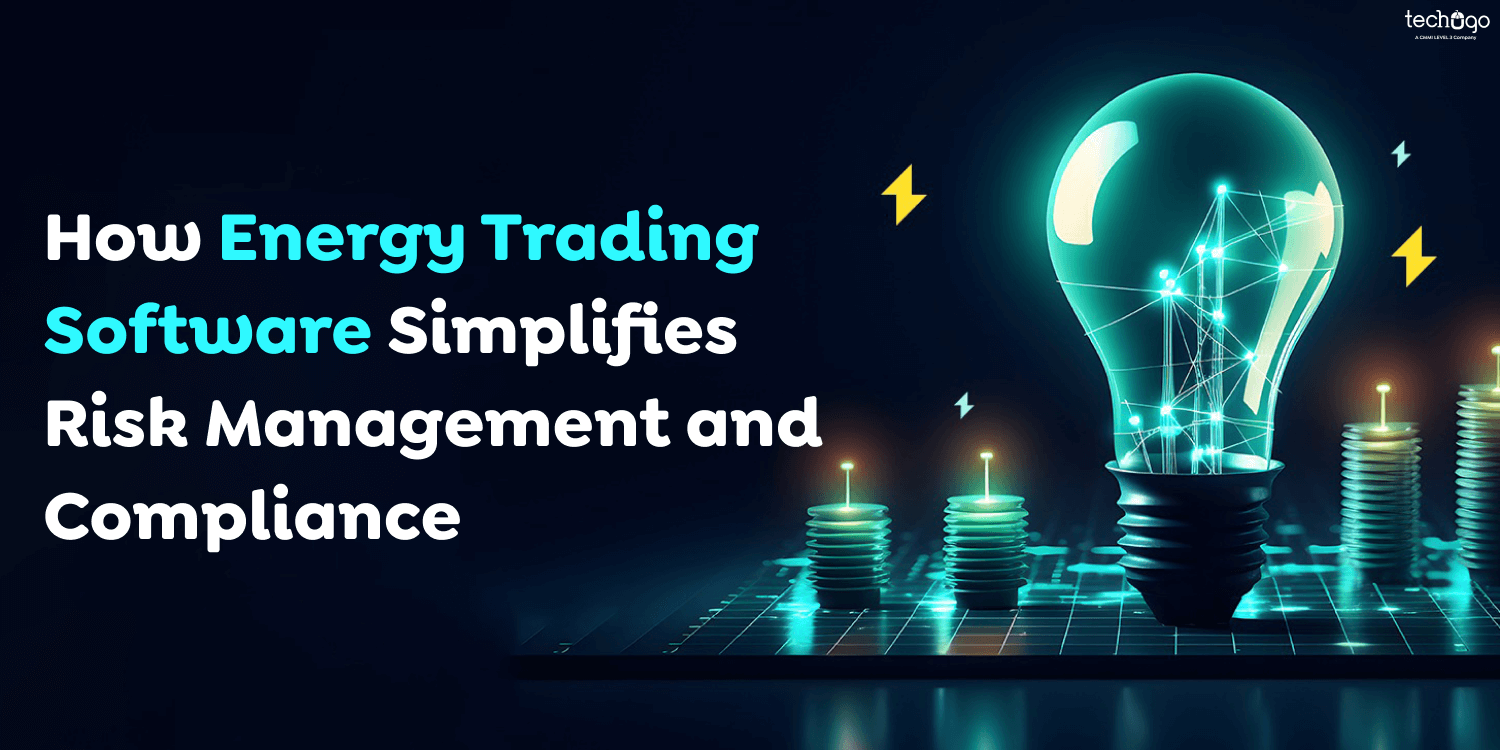
Within the realm of energy, it is becoming apparent that there is a requirement for ever-growing options that address the most pressing issues, such as inefficient processes, a lack of accurate data, complex regulations, and risk management problems. An effective tool could aid in tackling these issues and the complex trading of energy-related commodities, such as natural gas, crude oil, electricity, and renewable energy sources.
As the world shifts towards renewable energy sources, including Canada, the market for energy trading will continue to expand in the coming times. The sector has required new techniques and sophisticated analysis to detect the market’s trends and take informed trade decisions. Energy trading software is designed for traders to ease the selling, buying, and trading of commodities for energy and derivatives. The platforms are based on technologies that fulfill the requirements of brokers, traders, and other energy producers.
Starting a trading enterprise requires significant investments in capital and knowledge. It is crucial to comprehend the costs of starting an energy trading enterprise to ensure that you operate with a stable and profitable business model.
In this blog, we’ll examine energy trading software, its most important features, and the development cost that underlies it. We’ll help you comprehend the steps required for reliable trading software and the income potential it offers.
Understanding Energy Trading Software
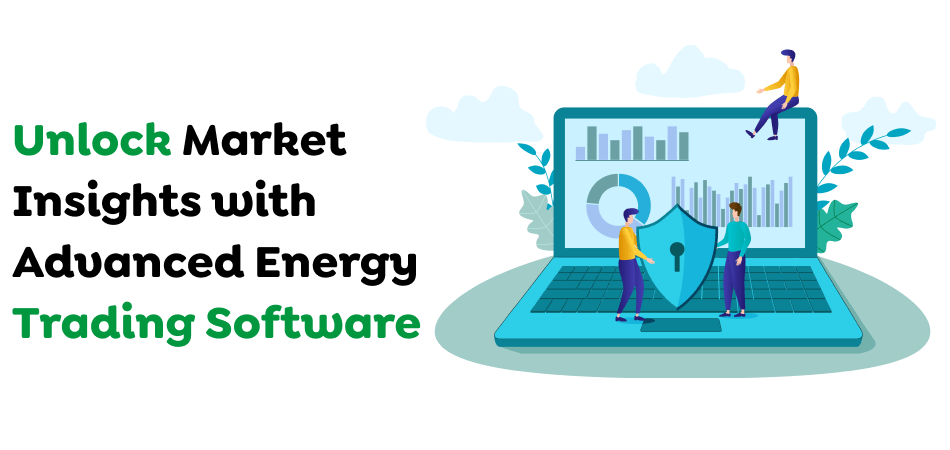
Energy trading software is developed to handle the purchasing and selling of energy-related commodities, including natural gas, electricity, crude oil, and renewable energy. It provides crucial tools for recording trades, analyzing risk, processing settlements, and meeting regulatory agency requirements.
Trading software can automate a variety of jobs, reducing errors while making it easier to execute trades quickly. It comes with advanced tools that assist traders with managing risk related to price movements or credit concerns, as well as regulatory compliance. The software can also be scaled and is, therefore, suitable for dealing with increasing volumes of trade and the ever-growing difficulty of energy markets.
It integrates market information collected from different sources to help traders make better choices. This comprehensive approach ensures traders operate efficiently, manage risks efficiently, and comply with rules within a dynamic energy market.
Read More: The Complete Guide to POS Software Development: Types and Benefits
Why Are Energy Trading Software In Demand?
The requirement for software to trade energy is growing due to a variety of essential factors that are affecting the energy market:
1. Support For Decarbonization
With a worldwide push for more sustainable energy sources, there’s been an increasing demand for carbon credits and low-carbon products. Energy trading software enables traders to navigate these new opportunities and facilitates trading sustainability-focused instruments.
2. Managing Geopolitical Risks
Trade disputes and geopolitical conflicts may disrupt the energy market. Trading software can provide the tools needed to manage these risky situations and assist traders in adapting their strategies to the global environment.
3. Handling Renewable Energy
With the increasing amount of solar and wind power added to the energy mix, managing these diverse sources can take time and effort. Software for energy trading helps monitor and respond to fluctuations and drops in renewable power. It assists in keeping trading operations steady even with fluctuating energy demand.
4. Adapting To Regulations
The rules for energy trading shift with every innovation and improvement. Energy trading software can help traders comply with the latest regulations, avoid sanctions, and comply with the law.
5. Embracing New Technologies
The energy industry embraces innovative technologies like blockchain and the Internet of Things. The latest software for energy trading integrates these advances, enhances data analyses, speeds up processes, and ensures the security of transactions.
Read More: Driving the Future: A Comprehensive Guide to Automotive Software Development
How Does Energy Trading Software Work?
Energy trading software simplifies the complexity of trading in energy commodities. The systems combine key aspects into one single platform to ensure that an efficient trading experience can be delivered. This is how they work:
1. Capturing Trade Details
Each trade, which includes particulars of the transaction and contract, is precisely recorded. This guarantees transparency and precision and allows for a reliable account of every transaction.
2. Managing Financial Risks
The market can be unpredictable, which is why risk management is crucial. Energy trading software monitors and assess financial risk. They help traders avoid losses and keep their strategies balanced.
3. Integrating Real-Time Market Data
It is crucial to access real-time information about pricing, supply, and demand. Trading software constantly collects data, enabling traders to make informed decisions.
4. Automating Trade Execution
Energy trading software automated trading tools can optimize trade execution. These instruments analyze market conditions and perform trades with the best timing, reducing manual interventions and increasing effectiveness.
5. Managing Portfolios
Energy trading software offers tools to help optimize and manage energy portfolios. This includes changing trade positions and managing assets in line with market trends to maximize returns.
6. Ensuring Regulatory Compliance
Conformity with industry standards and environmental regulations is as important as others in this area. Trading software ensures that every trading activity meets these standards’ requirements and provides detailed reports and auditing functions to make monitoring easy.
7. Simplifying Settlement And Invoicing
Automated processes for invoicing and settlement can reduce the chance of errors and speed up financial transactions. This improves efficiency and accuracy in the billing process and helps build confidence between trading partners.
Also Read : How Offshore Software Development is Shaping Global Business Growth
Cost Of Developing Energy Trading Software
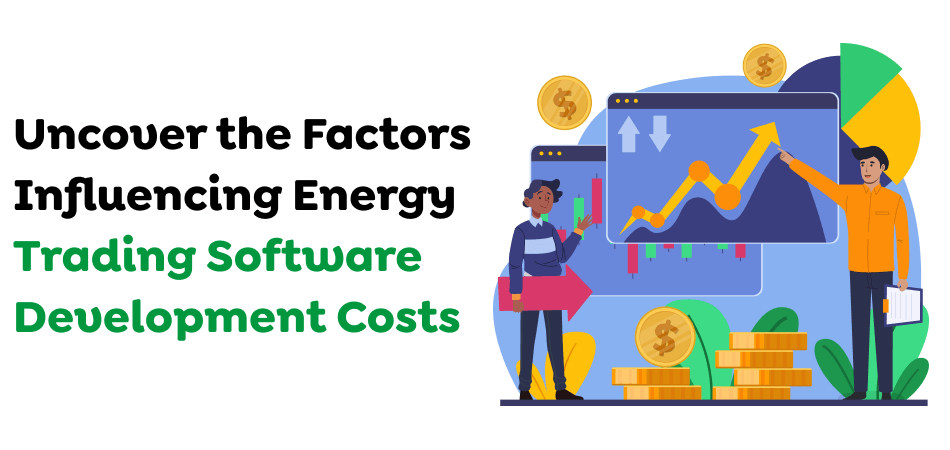
The cost of developing energy trading software can vary depending on the degree of quality, features, and the location of the software development company that creates it. To give you an approximate estimation, the price could range from $40,000-$40,0000 and more. The following are the most critical aspects that influence the cost of projects in the energy sector:
1. Real-Time Data Integration
If real-time data is needed, paying for such sources could be expensive. Ensuring that this information is reliable requires more checks, which raises the overall cost of development.
2. Regulatory Compliance
Different regions have rules to follow, and keeping abreast of the latest regulations can be costly. Regular updates to ensure compliance with the latest regulations, including ones for emission standards, are a major contributor to the initial cost and those that continue to be incurred.
3. Risk Management Capabilities
The development of advanced tools for managing the risks associated with operational and credit risks needs specialized expertise and resources. Making models that analyze different risks adds cost.
4. Integration With Market Infrastructure
Integrating the software with market systems like grid operators and trading platforms presents technical difficulties. It requires unique solutions, which can increase total costs.
5. Cybersecurity And Data Privacy
Complying with cybersecurity and privacy guidelines, including GDPR and CCPA, can increase the development cost. Having strong security measures in place and ensuring data security will require additional planning and resources.
6. Scalability And Performance
The software needs to handle markets and trading volumes effectively. Designing the software to function in the face of sudden price fluctuations and increased trading activity will require significant expenditure.
7. Specialized Knowledge
The hiring of experts from the energy market and technical fields can increase expenses. Experience in areas such as real-time data processing and risk analysis is essential. Still, ensuring that your software conforms to standard industry requirements could be costly.
Also Read : Unlock the Future of Software Development: Key Trends in 2024
How Does Energy Trading Software Generate Revenue?
To increase the amount of revenue generated by energy trading software, you must focus on the following strategies that work:
1. Use Data Analytics To Increase Revenue
The real-time data from the grid helps you make better trade choices and boost your earnings. Weather forecasts improve forecasts for energy demand and supply, specifically for renewables, and allow the trader to benefit from market movements. Market intelligence reports give insight regarding trends and laws that allow you to implement better trading strategies.
2. Increase Earnings With Specialized Strategies
Utilizing specialized strategies such as power purchase agreements or renewable energy certificates can open up the possibility of new revenue streams. Demand response strategies reduce the cost of energy and increase profitability by maximizing usage. Carbon credit trading fulfills regulatory agency requirements and can generate additional revenue by selling credit.
3. Cut Costs Through Compliance
Software that checks that you comply with emission trading schemes assists in avoiding costly fines and safeguarding your earnings. Monitoring renewable energy purchases so that they comply with Renewable Portfolio Standards (RPS) helps avoid penalties and unlock government incentives. Following grid codes can prevent interruptions and legal problems and secure your earnings.
4. Boost Profits With Effective Training
Education on energy markets trade strategies and risk management enhances your clients’ trading abilities and contributes to increased profit. Training programs customized to meet your particular needs and improve efficiency directly contribute to revenue growth.
5. Protect Revenue With Risk Management
Instruments to hedge against price volatility, including options and futures, can help stabilize income. An effective credit risk management system can prevent the financial loss of defaults, thereby protecting earnings. Managing operational risks, such as supply chain concerns, will ensure seamless trading and help avoid revenue losses.
6. Expand Market Reach To Maximize Revenue
Connecting with grid operators gives you live data, trading options, and real-time information, increasing market accessibility and potential revenue. Integrating with different trading platforms expands trading opportunities and allows traders to access greater opportunities in the markets. Integrating with Energy Management Systems improves energy utilization and trading decision-making, resulting in higher profits.
Also Read : How to Create Medical Billing Software: A Step-by-Step Guide
Must-have Features Of Energy Trading Software
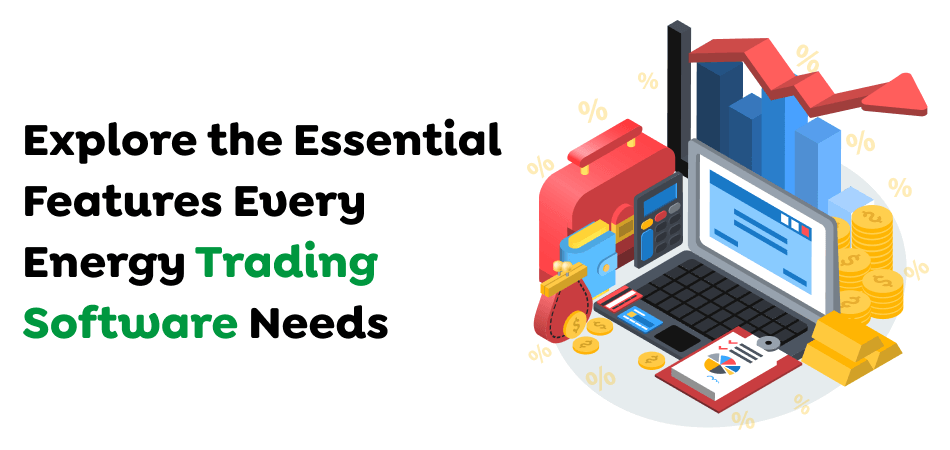
A good energy trading software must be reliable and efficient and have capabilities that meet the demands of the world of energy. Here are some of the most essential features that any software for energy trading ought to have:
1. Market Access And Workflow Automation
It is vital that real-time and day-ahead markets, as well as support markets, be accessible smoothly. Automating workflows enables rapid participation while decreasing human error risks to keep processes operating at full strength.
2. Advanced Analytics And Forecasting
Real-time market access and historical insights are of critical importance, making software that offers robust analyses essential. Energy markets’ demands, price fluctuations, supply conditions as well as trading activity must all be known so traders can make more informed choices and decisions.
3. Efficient Trading And Settlements
Automating trades and streamlining settlement processes is key for efficient trading and settlement processes, helping minimize errors during transactions while speeding up settlement times. It ensures everything runs on schedule and smoothly.
4. Risk Management Tools
Identifying and managing financial risks is the top goal in energy trading. The software must provide tools for risk assessment in real-time to manage price movements and market volatility, help traders maintain stability, and safeguard their profits.
5. Automated Trading
Algorithms Automated algorithms provide more effective trading execution. These programs optimize trading by studying data and placing trades according to predetermined strategies that reduce errors caused by human trading agents.
6. Portfolio Management
Maintaining and regularly changing energy portfolios and contract agreements are critical in keeping up with market changes, so the software should include tools to balance portfolios to optimize return.
7. Compliance Management
Staying abreast of changing rules is vitally important. In order to avoid legal complications. Your software selection must include tools that ensure compliance with market regulations like environmental standards and financial reports.
Process To Develop Energy Trading Software
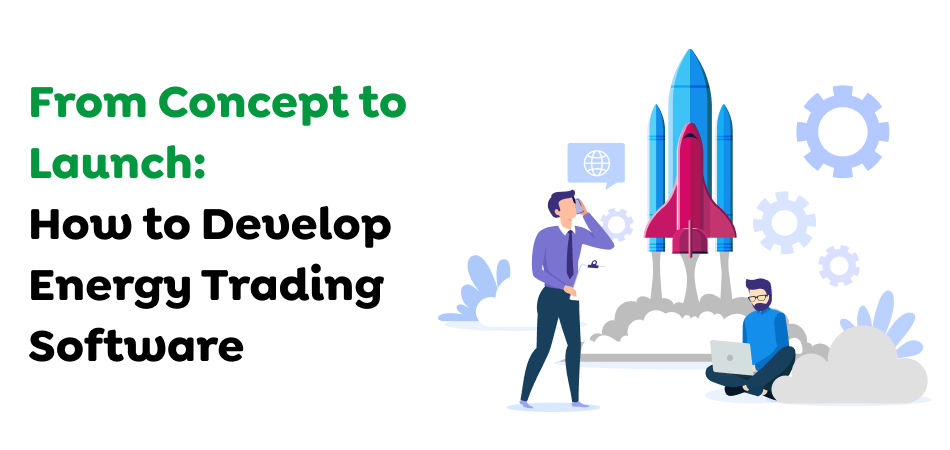
The development of energy trading software requires the following actions, including:
1. System Architecture Design
Create an architecture for your system that can accommodate live data processing, predictive analytics, and scalability. Choose the most appropriate data sources, including grid and weather information, and create the infrastructure to integrate data. Consider integrating blockchain and AI for more sophisticated offerings. Check that the structure is cloud-based to allow for the flexibility of your solution and reduce costs.
2. Data Integration And API Development
Create APIs and integration tools that connect to external data sources. Make sure that the system can handle huge amounts of data and provide instant updates. Set up data pipelines that allow for continuous data flow and high accuracy.
The goal is to integrate energy trading software into existing energy management systems. This is a key to enhancing trading strategies. Add features supporting participation in demand response programs, including load shedding and curtailment. This will also allow even more dynamic trading. It is also possible to incorporate your program with energy storage, which could help the platform control price volatility and enhance trading execution.
3. Risk Management And Compliance Tools
Design tools for managing risk while ensuring compliance with regulations. Make statistical models for price volatility. Implement risk management tools to deal with physical delivery risks and regulatory risks. Develop functionalities that will help you comply with emission trading schemes as well as other regulations on markets. Testing these tools under various situations is crucial to verify their efficiency.
4. Predictive Analytics And AI Integration
Incorporating AI into trading software could significantly increase the accuracy of predictions. Based on historical data from the market, machine learning models can predict future price fluctuations and spot emerging trends, allowing traders to develop strategies. Furthermore, natural language processing analyzes the news and social media for market sentiment to assist your customer in identifying patterns that could affect the price of energy.
5. Implement a Blockchain Solutions
Use blockchain-based solutions to ensure traceability for renewable energy and verify its authenticity – something increasingly critical to green markets’ credibility and compliance. To do this effectively requires creating and testing blockchain components before adding them into energy trading systems. Additionally, smart contracts may help simplify trading execution, settlement, and reconciliation procedures while mitigating risk to counterparties.
6. Cybersecurity Measures
Create security protocols to safeguard the system against attacks. Modeling threats will enable you to recognize potential dangers and take measures to minimise them. While developing an incident response strategy will ensure that you can respond efficiently when cybersecurity risks emerge and that its trading activities remain safe and sound.
7. Deploying And Scaling Cloud Software
Utilize cloud technology for software deployment and scaling purposes when dealing with rising volumes of trade in complex markets. Make sure your cloud environment allows for scaling so resources can adapt according to demand; use this approach both economically and performance-wise while making sure that scaling can occur without issue – your system should easily scale without hassle as required!
Also Read : The Ultimate Guide to Healthcare CRM Software Development: Enhance Patient Care
Ways To Reduce Energy Trading Software Development Costs
In the design and development of energy trading software, you might be wondering whether you could save or cut down on the development cost. The truth is that the final cost is contingent on a myriad of elements. However, you can reduce the cost by implementing a well-planned planning process and organizational structure. In this part, we’ll discuss various methods you could employ to stay within your budget.
1. Understand Your Target Market
Finding out your intended market and identifying the possible problems your product will cause users is a crucial aspect of product development. If you can manage this first phase, the greater likelihood you are of capturing the costs of labor for developing software. Knowing your market’s needs will help with the idea’s validation.
This is a further step toward cutting down on the cost of software development. Confirming your concept through studies about your market’s target and potential users is the ideal method to ensure that your business idea will be as successful as you think it can be.
2. Provide Clear Requirements
If you analyze your marketplace and customer expectations, you’ll understand the products you must develop to address their issues effectively. Then, it is essential to communicate the requirements in the most concise manner feasible.
The research you conduct will aid in your initial contact with your vendor, making it easier to estimate the costs for energy trading software development and allowing you to pick the correct implementation method for your project. The clarity in your project’s requirements will ease the communication. This is likely to prevent miscommunication and mistakes.
3. Implement DevOps
DevOps is another method for maximizing the budget for app development. One of the most critical aspects of the DevOps strategy is that this approach and mindset allow team members to interact better with one another and the client.
The software’s development team and the people responsible for operating it share responsibility clearly, which assists in avoiding shifting responsibility between team members one after another. DevOps requires the smart condensing of areas of accountability. DevOps’s primary elements are continuous integration and continuous delivery (CI/CD).
This method involves slowly integrating the modules created into operations to determine their efficacy and obtain feedback. Thus, it is possible to prevent a scenario where the program you have created doesn’t fulfill your company’s objectives and requirements.
4. Adopt Lean Approach
The advice on capitalizing on the costs of developing software is a component of the Lean development method. Following its fundamental concept, you must verify, test, and verify an idea before investing. Market research targeted at a specific location and idea validation are elements of the Lean strategy.
The Lean method is a general approach that works for any sector. Additionally, it functions perfectly when combined with the Agile method when it is used properly. Flexibility is one of the fundamental principles of Agile, as intelligence and thrift are the central tenets of Lean. These two approaches give you the best opportunities for change and adaptation, ensuring that every concept is thoroughly evaluated and you decide how to apply the ideas.
5. Adopt Agile
Agile is not an enlightening pill or the best way to reduce costs. It’s an insurance policy to be prepared for changes in the market. If you develop your project in this manner, the project can adapt and always be prepared for changes.
This means you are always aware of a constantly changing marketplace and customers’ expectations. It also means you can adjust your strategy and develop a product that is sure to get the attention of your intended audience, even if preferences change during development.
6. Prioritize Usability
It is essential to find an efficient design solution while keeping usability at the forefront. It isn’t easy to separate design from usability since the appearance of a design is the first image that entices the user to keep exploring the app, close the page, or delete the program.
So, it is imperative that your trading software be as well-balanced as possible, utilizing industry best practices. Additionally, your solution should keep up with the latest developments while making your software easy to use from the first moment until the final actions. In some cases, developing design elements entirely from scratch is unnecessary. It is possible to use pre-designed elements and semi-customized approaches to reduce development costs.
Reasons To Invest In Energy Trading Software Development
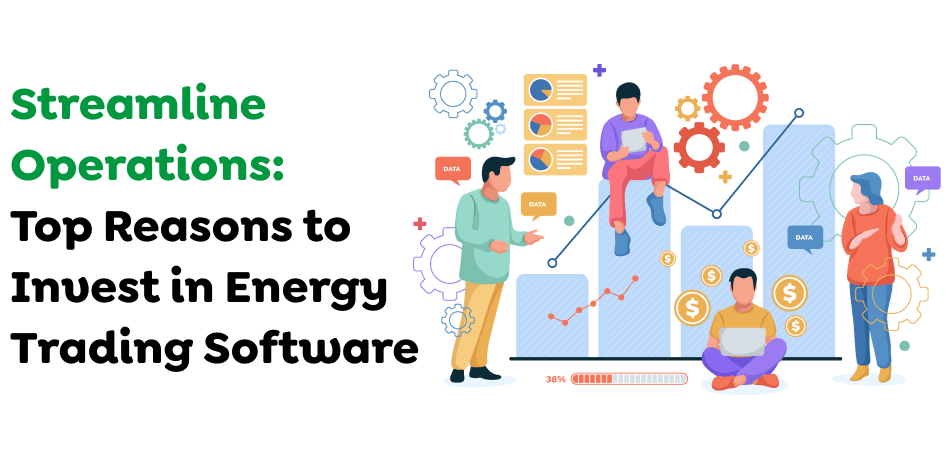
After becoming conscious of the word energy trading software, what’s the point of investing in this enterprise solution? What advantages does it offer, and can it be considered an investment that will be dependable in the future? Let’s look at the answer to all of these questions.
1. Real-Time Data Analysis
The ability to make better decisions is one of the main benefits to be gained through the development of software for energy trading. Consider a crystal salamander as a means to make the correct business choices. This is exactly what the development of the energy trading program gives you. This isn’t just about calculating numbers; it’s about helping the user to make more informed choices.
Software that tracks energy trades collects information about your company’s activities and patterns from various sources and transforms the data into live-time information. Employing trading software for information analytics, you can examine current market developments as they unfold, be aware of price movements during events, and understand the market’s flow and flow.
What’s the outcome? If you can gain this level of understanding, your decisions will be more precise and quick. This is like being a beacon amid uncertainty. When you need to take a step, it will be clear that you’re confident you’ve made the right choice. This isn’t just about improving choices, but it’s about changing how you conduct your business.
2. Streamlined Trading Operations
One of the main benefits of developing software for energy trading is the streamlined and efficient business processes. Implementing custom trading software that automates your trades makes it possible to say goodbye to manual and time-consuming work. This software handles those repetitive, draining jobs that can drain the team and manages these tasks in an automated way. Things like trading execution, order management portfolio optimization, order management, and compliance management can be automated with this fantastic energy management program.
This means that the team can shift its attention to the bigger idea and the strategic actions that can undermine your company’s chances of achievement. However, this is like having a team of more people on the table in a digital, practical form. Therefore, by using smart trading software, you’ll be able to make your vehicle run more smoothly, quicker, and more accessible.
3. Better Risk Management
Compliance and risk control are further benefits of investing in software for energy management advancement. The energy market can be unpredictable, similar to ocean waves. However, it’s not dark if you use the right tools, like weather radars, to identify potential dangers offered by software for energy trading.
Be prepared for any unplanned turn in that market. This isn’t about totally. Avoiding hazards is impossible. Be prepared to stay away from being caught with risk. If you decide to invest in software that helps you trade energy development, you’re in essence.
Conclusion
The energy market has become complicated due to the growth of renewable energy sources and innovative technology. This is why there’s a need for the development of more efficient trading tools. Energy trading software simplifies handling transactions, minimizing risks, and ensuring compliance with the laws. Investments in such tools can aid you in making better decisions and boost your profit.
As the energy industry evolves, keeping ahead of the curve with modern technology will be crucial to longevity and success. Therefore, adopting these tools can help you navigate the ever-changing market and achieve more efficient business results.
Get in touch with Techugo to explore how energy trading software can revolutionize your trading strategies and maximize market opportunities.
Get In touch
We are excited to here from you and let’s start something special Together. Call Us for any inquiry.
Write us
sales@techugo.caJust a call away
About you




